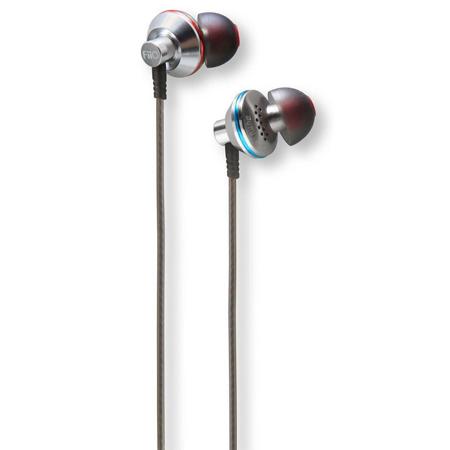
Overview
Compare
Q&A
Questions & Answers
Reviews about this item
Review Summary
About FiiO EX1
Aerospace engineering material for driver diaphragms
The diaphragm is the heart of the sound production facility of earphones, determining the sound quality of the earphones to a great extent. To produce better sound, sound engineers have always been looking for a lighter yet stiffer material to transduce sound with less distortion.
They have discovered that titanium, a material more often found in aerospace engineering, is very light, with high conduction speed, yet several times stiffer than steel; they have been able to design a full-range dynamic driver around this material with breakup frequency above the audible range, thus ensuring clear, even high frequency reproduction.
Highly researched duralumin / stainless steel housing
All components of the earphone housing are precision CNC milled, with the back made of anodized duralumin and the front stainless steel, the "beehive" of tuning ports on the front being precisely sized and positioned to deliver the desired sound tuning properties.
Nanotech titanium diaphragm driver
Delivering even power response across frequencies and a natural yet energetic sound, the titanium diaphragm can handle high power without distortion while preserving exemplary transient response, unlike traditional dynamic driver diaphragms.
Kevlar-strengthened high-purity multi-strand OFC cable
The Ex1 headphone cable consists of 42 strands of high-purity OFC copper intertwined with 250D Kevlar fiber strands, ensuring superior sonics as well as great strain resistance and longevity. The outer sheathing is composed of medical-grade TPE for minimum microphonics and maximum biocompatibility (avoiding skin allergies).
Non-resonating metal body
Metal body is designed to suppress resonances to the maximum extent, preserving the superior transient response of the nanotech titanium diaphragms for lifelike reproduction of live sound.
Ergonomic offset nozzle design
With small rounded on-ear driver housings and shallow in-ear nozzles, ensuring long-term wearing comfort.
Complete selection of eartips for optimum fit and sonics
Correct selection of eartips is crucial for comfort and sound quality. The Ex1 comes with several sets of eartips of different sizes and designs to let you find the best fit, both physically and sonically.
Nanotech titanium diaphragm and traditional diaphragm compared
Employing titanium as the diaphragm material demands greater control on material purity as well as manufacturing tolerances. The end product has optimum transient and dynamic properties.
Distortion response
Third-party measurements show low distortion throughout measured frequencies at below 1%.
Frequency response
Third-party measurements show smooth frequency response which, when compensated with average headphone HRTF show a gentle downslope resembling in-room response of well-placed speakers. The smooth raw frequency response is brought about by elimination of diaphragm breakup at audio frequencies.
Impulse response
Short tail attests to low resonance (a Dirac impulse is not the ideal target as headphones require frequency response shaping which will affect impulse response).
What's in the box:
- FiiO EX1 Aerospace Nanotech Titanium Diaphragm In-Ear Monitors
- 4x Sets of Ear-Tips
- Protective Case
- FiiO 1 Year Limited Warranty